
We are going to talk about the history of Peterbilt trucks. It all started as a necessity, then an idea and then an action that became one of the largest truck manufacturers in the world. If you want to know how this happened, keep reading.
Who was T.A. Peterman?
Theodore Alfred Peterman was a plywood manufacturer and lumberman in Tacoma, Washington. At the time he was looking for a better way to move his felled logs to the lumber mills more efficiently and productively.
He started by purchasing surplus military trucks and modifying them for his needs. Then in 1939, he completed the purchase of the Oakland division of Fageol Truck and Motor Company from Sterling Motor Company, who purchased the majority of the assets from Waukesha Motor Co. and the Central Bank of Oakland.
Peterman built two ‘chain-driven’ trucks for logging purposes, but they did not work for this purpose. These trucks and engines did work very well for normal hauling and freight transportation. The company continued building trucks that were built and sold very well. The company later became known as Peterbilt.
How did Peterbilt get its name
After acquiring Fageol Truck & Motor Company, Peterman set out to build new trucks for the logging industry and wanted a new name for the truck manufacturing company.
According to information out there, the name of ‘Peterbilt’ derived from a line of wood doors that was produced one of Peterman’s lumber facilities. Plywood was used very liberally on the interior of early “Petes”, which was another link with Peterman’s lumber operations.
Peterbilt manufactured 14 trucks in their first year in business.
What was the first Peterbilt ever made?
The oldest Peterbilt trucks were the Model 260 and Model 334. Both of these were known for their all-steel cab.
Model 334

Model 260 fun facts
- Model 260s were chain-drive single-drive-axle trucks.
- The base-powered unit gasoline weighed 32,000 pounds.
- The diesel-powered unit weighed 37,000 pounds.
Model 260
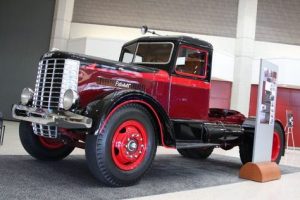
Model 334 fun facts
- Model 334s were dual drive
- It weighed up to 44,000 pounds.
- Had provided with egg-crate grille
Here is a brief history of Peterbilt and some of their contributions to heavy-duty truck parts:
In 1939 Peterbilt started selling trucks to the public. Peterman sent his engineers out to speak with the truckers themselves to see what their needs and expectations were for their truck.
He didn’t just think about engine performance, but all aspects of heavy-duty truck parts from the grill to hoods and overall cab design. This attention to the truckers paid off as the overall design of the truck was a hit and set the stage for the distinctive styling that Peterbilt would become known for.
The Goal
Dedication to quality was also very important to Mr. Peterman. As Ford was producing hundreds of trucks a day with its assembly line and manufacturing plant, Peterman set a goal of 100 trucks a year. In 1939, they built a total of 14 trucks (partial year) and in 1940 the company built 82 trucks.
1945 – Peterbilt pioneered the use of aluminum to reduce cab & chassis weight, which increased payload capacity. In 1949, the company unveiled a practical cab-over-engine model in anticipation of highway length limits.
1958 – Peterbilt was purchased by Pacific Car & Foundry who primarily manufactured railroad freight cars. Pacific Car had purchased Kenworth in 1944 and was already a competitor in the heavy-duty truck market and replacement parts. The Pacific Car & Foundry later changed its name to PACCAR in 1972
1959 – Peterbilt introduced the 90-degree tilt hood for easier service, then in 1965 built the 1st all-aluminum tilt hood for conventional models.
1960 – Peterbilt opened a new manufacturing plant in Newark, CA. 800 trucks were produced in the 1st year.
1969 – Peterbilt opens its 2nd manufacturing plant in Nashville, TN. They closed this facility down 40 years later in 2009
1970’s – Peterbilt began manufacturing trucks for refuse.
1980 – Peterbilt opened a then state-of-the-art manufacturing facility in Denton, TX. Most of the manufacturing from the Newark plant was consolidated and moved to Denton. The Newark plant was officially closed in 1986.
1984 – Peterbilt introduced Model 349 which introduced innovations such as the rear engine power take-off and the self-steering lift axle for the construction industry.
1993 – Peterbilt moves their official headquarters and engineering from Newark, CA to Denton, TX
Jumping ahead some.
2011 – Peterbilt introduced Model 386 which is the first Smartway Designated Alternative Fuel Vehicle of the industry.
2011 – Peterbilt introduced Model 587 which set new standards of aerodynamic and operational efficiency. This was also the first in the
Trucking industry to become standard with Air Disc Brakes.
2014 – Peterbilt introduces the EPIQ Package for their Model 579 truck, which already had broken new ground in aerodynamic efficiency and fuel economy.
The EPIQ package Includes Complete Aerodynamic Package, a PACCAR MX-13 Engine, Fuller Advantage Automated Transmission, Single Horizontal Exhaust, SmarTire Tire Pressure Monitoring System, Low Rolling Resistance Tires and Optimizing Spec’ing Software.
Darrin Siver, Peterbilt general manager, and PACCAR vice president has been quoted saying “Peterbilt’s products are among the most technologically advanced and we continue to invest and develop innovations that boost productivity, durability, and Safety.”
As Peterbilt continues to push boundary edges, it will be interesting to see what the next 75 years will bring as technologies continue to advance.
There are many valid arguments to consider a glider kit as a viable option if you are looking to replace your truck.

The Glider kits are completely new trucks manufactured with remanufactured mechanical components.
The manufacturer can offer cab, chassis, axle, and suspension.
They can install a remanufactured engine, but the engine would have to be the same year or newer.
Besides the donated parts from an older truck, glider kits include:
- New cab.
- Dashboard assembly.
- New front axle assembly.
- Front wheels.
- Many other new commercial truck parts.
As company fleet vehicles get older, the cost of constantly repairing older trucks and replacing the commercial truck parts throughout the year can become expensive.
The cost of purchasing a new truck can influence how long a company tries to continue repairing its aging trucks.
Most popular Glider kits are:
The Detroit Diesel 60 Series and the Caterpillar C13/C15, both of which are EPA 98/04 compliant and do not have EGR or SCR.
These engines are reliable, low maintenance and very economical.
The manufacturers guarantee Glider kits when they install remanufacturer components in the plant.
Now, when the builder is the one who finishes the unit, the different suppliers of the drive train will deliver the corresponding guarantee.
Canada is another country that has a growing sales of Glider trucks, especially in the activity of timber and heavy load transport.
Where each transporter prefers its configuration for its unit.
The era of the Glider has arrived and will extend to other continents.
Here are some advantages of purchasing glider kits:
- Completed Glider Kits (purchase price, labor (build), parts) must be 75% or less than the cost of a new vehicle. This also referenced as the “Safe Harbor Rule”.
- Gliders can be sold without the 12% Federal Excise Tax, as a minimum of 2 major components supplied by the customer and used in the build. The IRS has hinted that changes to this may occur and you should look into Ruling 91-27 on the IRS website
- Full factory backing with all new components, 1 year/100,000 mile warranty is standard, with optional extended warranties. Full engine warranties may vary by engine manufacturer.
- New Truck “financing rates” often the can use the value of the older components that are ‘donated’ for the build against the down payment of the purchase of a Glider Kit

Are Glider trucks considered new?
During my research, I came across an interesting question.
Are the Glider kits considered “new” or “used”?
Manufacturers certify Glider kits as if they were new, given a new model year & VIN, which are deductible and would depreciate like a new asset.
The National Highway Traffic Safety Administration (NHTSA) considers “Used”, a truck completed with both new & used commercial truck parts, including new cab (such as a glider kit) must incorporate a used engine, used drivetrain and used rear axle – and at least two of these components must come from the same “donor” truck.
If the build meets these requirements and maintains a “used truck” identity,
then no requires a certification labeling.
Are you tired of constantly repairing your truck and replacing varying commercial truck parts just to keep your rig running?
Then maybe a “Glider Kit Built Truck” is something worth looking into.
If you want to know more about trucks check our Blog!
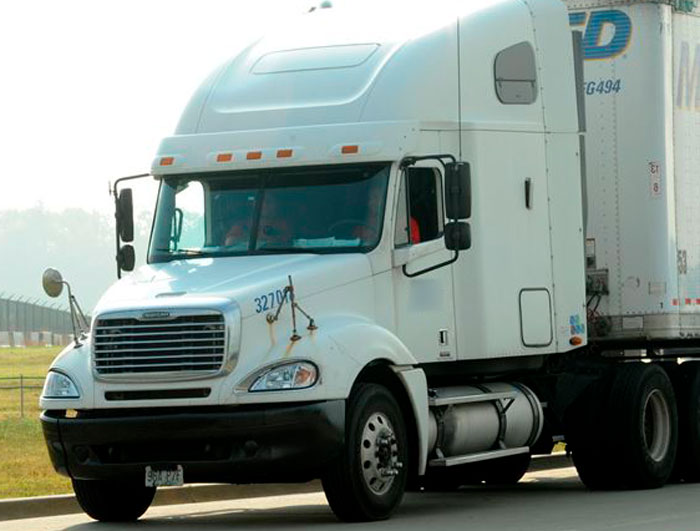
Your company fleet vehicles, are they starting to put on miles or years?
Are they driven in rough road conditions, or on smooth highways?
Does your company have a separate garage to do in-house maintenance and replacement of your commercial truck parts?
Or are the vehicles sent to an off-site location trusted for their work?
Do you know what brand/company can be your solution to your commercial truck parts needs?
No matter if your company repairs your trucks in house or sends them out to a trusted licensed repair shop.
it’s worth knowing what you are putting into your vehicles.
There are many different types of commercial vehicles on the road today.
As the definition leads to a wide array of styles, from your regular pick-up vehicle to the big semi’s hauling trailers behind them.
Any company that purchases a vehicle(s) for company use, no matter if it’s a taxi shuttling passengers, or mobile trucks repair carrying tools & parts, these would be considered commercial vehicles.
Just imagine how many different possibilities there are in this country alone.
How can you be sure that a certain company has the right commercial truck parts for your needs?
Well, I am here to help you figure that out.
First
If you are a retailer or repair shop, you want to find a company that is a diesel engine parts wholesaler/distributor.
They are designed to sell their products with no sales tax for their customers.
Sorry to all the customers whose fleet vehicles are regular gas engines, but diesel engine commercial truck parts are the topic today.
Second
Not all diesel parts distributors carry parts for all diesel engines.
Some may specialize in certain commercial parts for “Heavy & Medium Duty” trucks only.
These types of trucks are the big Semi-Tractors you would see on the highway hauling one or more trailers behind it.
Then there are also the box or straight trucks.
These types are more common for city deliveries but have similar engines as the bigger semi-tractors.
Big passenger buses also fit into these categories as well.
Pick-up vehicles with diesel engines do not fall under these categories and may not fall into a distributor’s product range.
Now that we have narrowed down the field, there are still some concerns that need to be addressed to determine the right brand of commercial parts for your truck or fleet needs.
What type of truck do you have?
Some of the more popular trucks on the road are equipped with the following types of engines:
- Caterpillar.
- Cummins.
- Detroit Diesel.
- International/Navistar.
- Mack/Volvo to name a few.
Okay, so your vehicle has one of the mentioned types of engines and now your next concern would be the quality of the products themselves.
This is always a valid concern, especially when you are thinking of trying out products from a new source.
Make sure that your research is thorough, and you review more than one source of information about a company.
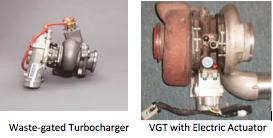
Ever wonder what a VGT is? It stands for Variable Geometry Turbocharger. It might also be called a VNT, which means Variable Nozzle Turbocharger.
There are excellent explanations of VGT designs on the Internet, but our interest here is more upon their maintenance.
First, why are VGTs needed on diesel engines?
The answer is that the former waste-gated designs are too slow for today’s fuel injection systems.
Current common rail fuel injection systems fire as many as five times in one combustion cycle. In order to maintain proper air/fuel ratios, the turbo boost has to be adjusted more rapidly than a pneumatically controlled system can keep up with.
Secondly, the VGT acts as the “traffic cop” which balances air intake pressure with exhaust backpressure required for EGR induction and is constantly “hunting” to maintain the balance.
So what do we need to know about VGTs? Here are some facts about them.
- Boost will fluctuate, depending upon vehicle speed, load and desired EGR flow. Boost is almost instantaneously altered with throttle position changes. Even at steady throttle and constant load the boost might vary with EGR demand.
- Boost can vary day-to-day. Ambient air pressure and temperature are sensed by the ECM so that boost pressures are always optimized for engine operating requirements.
- VGTs will whistle loudly in certain normal engine operating conditions. This condition occurs when the ECM requests more exhaust heat for regeneration of the diesel particulate filter. The whistle might sound like a boost leak but is actually a normal condition.
- VGT sizing must be matched to the engine to prevent over-boost conditions.
- The replacement of a VGT requires reprogramming of the actuator.
In order to protect a VGT from seizing, it is essential that we maintain engine oil cleanliness.
The VGT turns at speeds exceeding 100,000 rpm, so bearing failure is catastrophic. The engine oil both lubricates and cools the bearings.
We want to avoid conditions like these:

We can avoid VGT failure by employing protection procedures.
- First, we match oil changes to engine hours and drive cycles, NOT to mileage.
- Second, we watch for oil pan sludge accumulation and check oil condition when we change oil. Gritty oil will lead to turbo failure.
- Third, we watch for the engine “making oil”. That is, excessive DPF regeneration attempts due to contaminated turbo output pressure sensors or to improper DPG regeneration functions can dilute the oil with fuel.
We need to record OIL LEVELS upon oil changes to protect against dilution.
If we detect sludge build-up, we need to either clean or replace the oil pan and fix the root causes of sludge creation or fuel intrusion.
Taking the proper precautions to prevent VGT failures can save repair bills of thousands of dollars for replacement and calibration of a VGT.
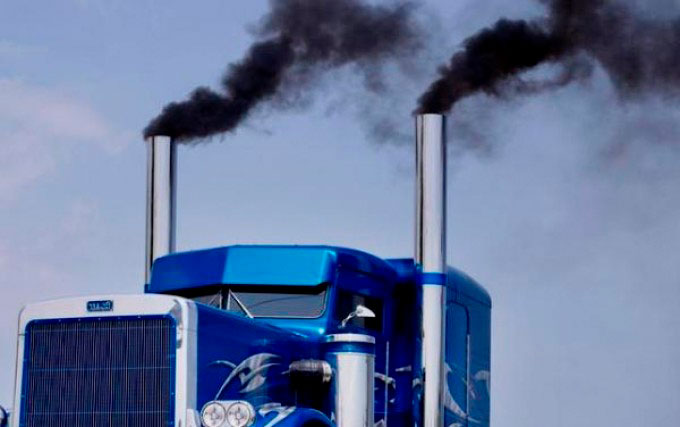
What are exhaust gases?
Usually made from cast iron or stainless steel, an exhaust manifold collects engine exhaust fumes from multiple cylinders,
(fumes made during the combustion process) and delivers them to the exhaust pipe.
The exhaust pipe in turn, funnels the exhaust gases to a catalytic converter and the muffler.
When an engine starts its exhaust stroke,
the engine piston moves up in the bore of the cylinder, which decreases the total chamber volume.
The exhaust valve opens and the high-pressure gas escapes into the exhaust manifold or header, creating an ‘exhaust pulse’.
Exhaust manifolds can be an important source of backpressure.
Because exhaust gases from one cylinder can build up pressure in the manifold and that affects the next cylinder that uses the manifold.
Exhaust Gases can be harmful to inhale
Making it very important to have a fully functional exhaust manifold for your trucks or fleet vehicles.
Detecting an exhaust leak can be very difficult,
people may inhale exhaust gases without being aware of it.
Exhaust manifolds come in all different types, shapes, and sizes depending on the engine type and model.
Some can have 4 portholes if it’s a 4 cylinder engine, or 6 portholes if it’s a 6 cylinder engine.
No matter size or material of the exhaust manifold, they all perform the same basic function.
Over the last few decades, air emission standards have forced automobiles to improve the exhaust process.
So vehicles are not sending too many harmful pollutants into the air.
These same standards are beginning to catch up with the diesel engines heavy/long haul trucking industry.
As technology improves, so has engine parts. One such improvement was the advent of the EGR system.
What does exhaust gas contain?
Compared to the composition of air,
the diesel exhaust gas contains increased concentrations of water vapor (H2O) and carbon dioxide (CO2)—the main combustion products.
The concentrations of both H2O and CO2 can vary from a few percent, up to about 12% in diesel exhaust.
These combustion products displace oxygen, the concentration of which can vary from a few percent, up to about 17% (compared to 21% in ambient air).
The main component of diesel exhaust, just as is the case with ambient air, is nitrogen (N2).
By comparison, the concentrations of diesel exhaust pollutants are very small.
For the purpose of calculating the physical properties of diesel exhaust gas, they can be neglected.
Resource: Diesel Exhaust Gas
What is exhaust gas recirculation?
Exhaust Gas Recirculation is a process that is supposed to reduce the nitrogen oxide emissions that are released into the air, by engines in general.
This is done by recirculating some of the engines exhaust gases back into the engine itself.
With diesel engines, the exhaust gas replaces some of the excess oxygen in the pre-combustion mixture,
and can lead to lower temperatures in the lower combustion chamber, which can result in a loss of engine efficiency.
With the introduction of EGR, many engine parts have been redesigned to accommodate this new system.
Different Parts have been redesigned specifically for EGR systems such as:
- Exhaust Manifolds.
- Oil Coolers.
- Water pumps.
Exhaust gas recirculation valve
The first EGR systems were crude and simple in design.
Some cases, an orifice jet between the exhaust & intake tracts, circulating air from exhaust to the intake, while the engine was running.
This design resulted in rough idling & reduced performance.
The exhaust gas recirculation valve controlled by a manifold vacuum was added to control the flow from exhaust to intake, under certain conditions.
In modern diesel engines, EGR gas is cooled with a heat exchanger to allow the introduction of a greater mass of recirculated gas.
Exhaust Gas Recirculation is now a requirement in most modern engines, due to emission regulation standards.
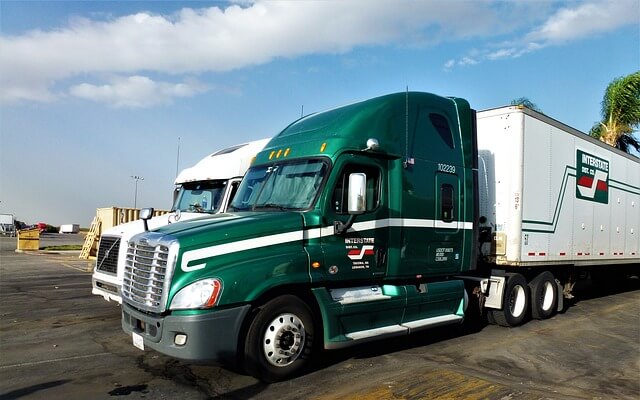
Diesel engines are becoming more popular, and are being used more & more in automobiles as well as heavy haul trucks. As diesel engines are now being used more often, there are more places where you can fill your diesel engine spare parts needs.
Do you know the difference between a Diesel Engine and a Gas Engine?
All diesel mechanics would be able to tell you the difference, but for those who aren’t, I have some information for you.
Both diesel engines & gas engines are considered “Internal combustion engines”, so they are similar in this regard. It’s how the combustion happens that makes them different.
Diesel Engine: (aka – compression-ignition engine)
Uses heat of compression to initiate the ignition & burning of fuel that has been injected into the combustion chamber.
Spark-Ignition Engine:
Can be referred to as either petrol or gasoline engine. Instead of using compression to initiate an ignition, spark plugs are used to ignite an air-fuel mixture.
Even though the use of diesel engines is on the rise, finding reliable diesel engine spare parts can be tricky. Not all parts shops carry diesel engine spare parts, and the ones that do usually carry just the more popular brands or parts found in their local area. The best thing to do is find a parts shop that specializes in diesel parts if possible.
Do you know some of the pros/cons of diesel engines vs gas engines?
PRO: Diesel engines get great mileage and can deliver anywhere from 20%-30% better fuel economy.
This all depends on the setup of the engine and if it’s an automobile or long haul truck.
CON: As the use of diesel engines increases, the price of diesel fuel will continue to increase. Diesel fuel is used not just for engines, but home & industrial generators & heating oil.
PRO: Diesel fuel is one of the most efficient & energy dense fuels available because it contains more usable energy then gasoline.
CON: The extra energy doesn’t result in extra high-speed performance. Diesel engines are more considered work horses, while gasoline engines are considered racehorses. As technology advances, so does the efficiency and output of diesel engine spare parts. Some automobiles with diesel engines can compare to certain high powered gasoline equivalents.
PRO: Diesel shave no spark plugs or distributors, so they do not require ignition tune-ups.
CON: Regular maintenance is still required to keep diesel engines running. There are multiple filters that regularly need to be changed.
Due to how diesel fuel burns, diesel engines provide more torque to the driveshaft than gasoline engines.This allows diesel powered trucks, SUVs and cars to “out tow” gas-powered vehicles while still providing that improved fuel economy.
It’s no wonder that the majority of heavy haul trucks use diesel engines instead of gasoline-powered engines.
The use of diesel engines are not limited to automobiles, trucks or generators. Many of today’s construction machines, buses and farm/agricultural machines utilize diesel engines.
As the use of diesel engines increases and technology improves, the need for diesel engine spare parts will increase and improve with them.










